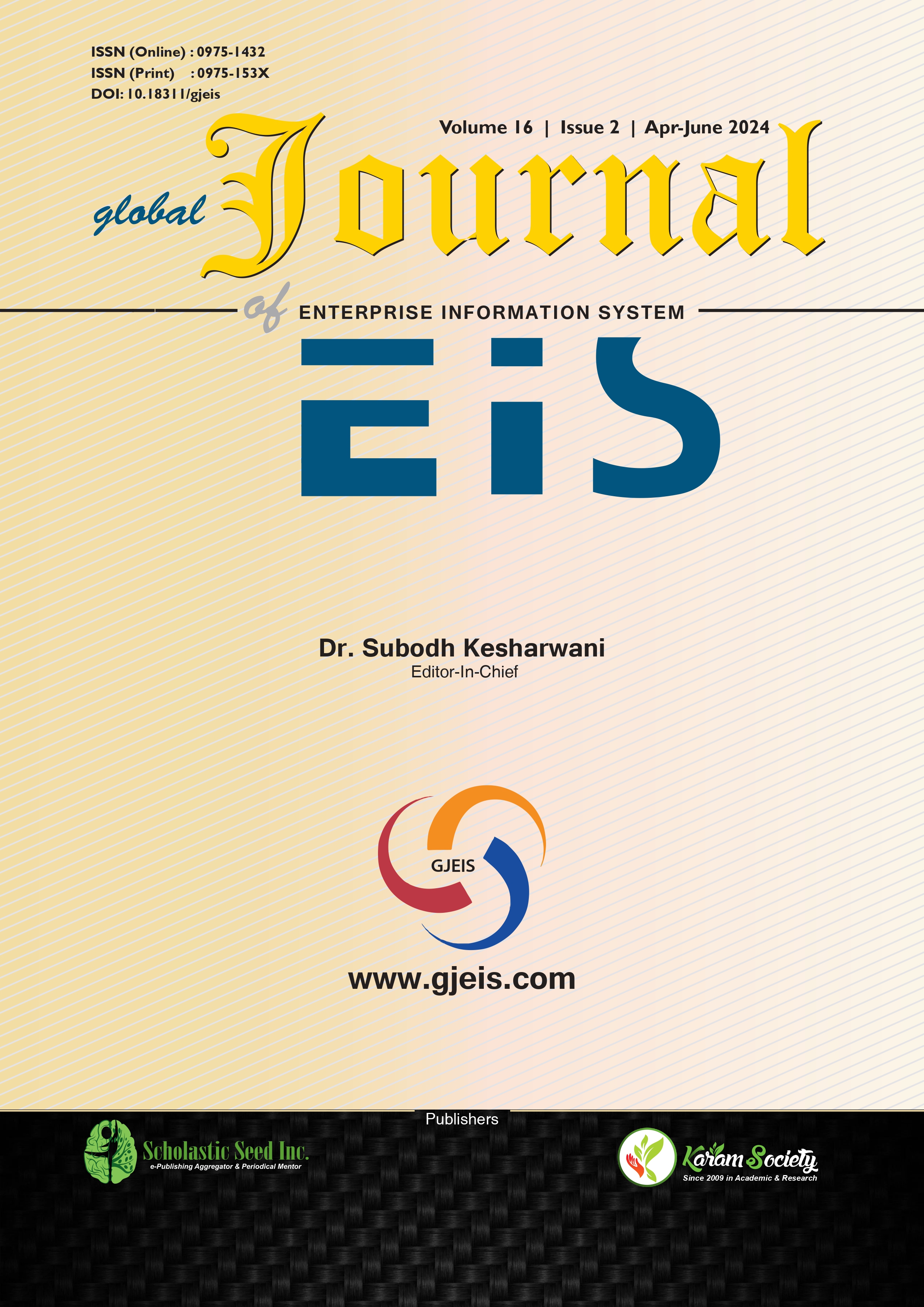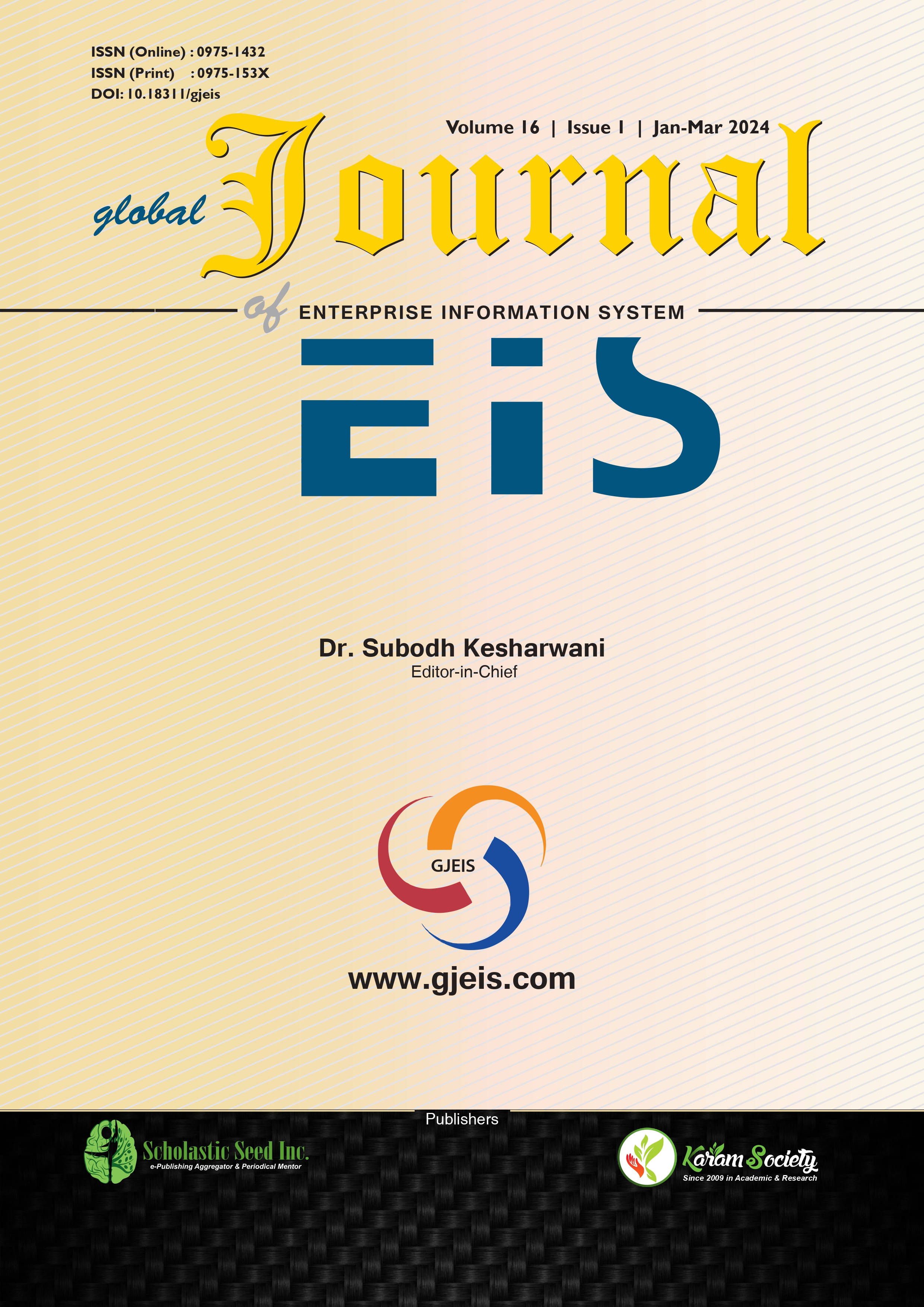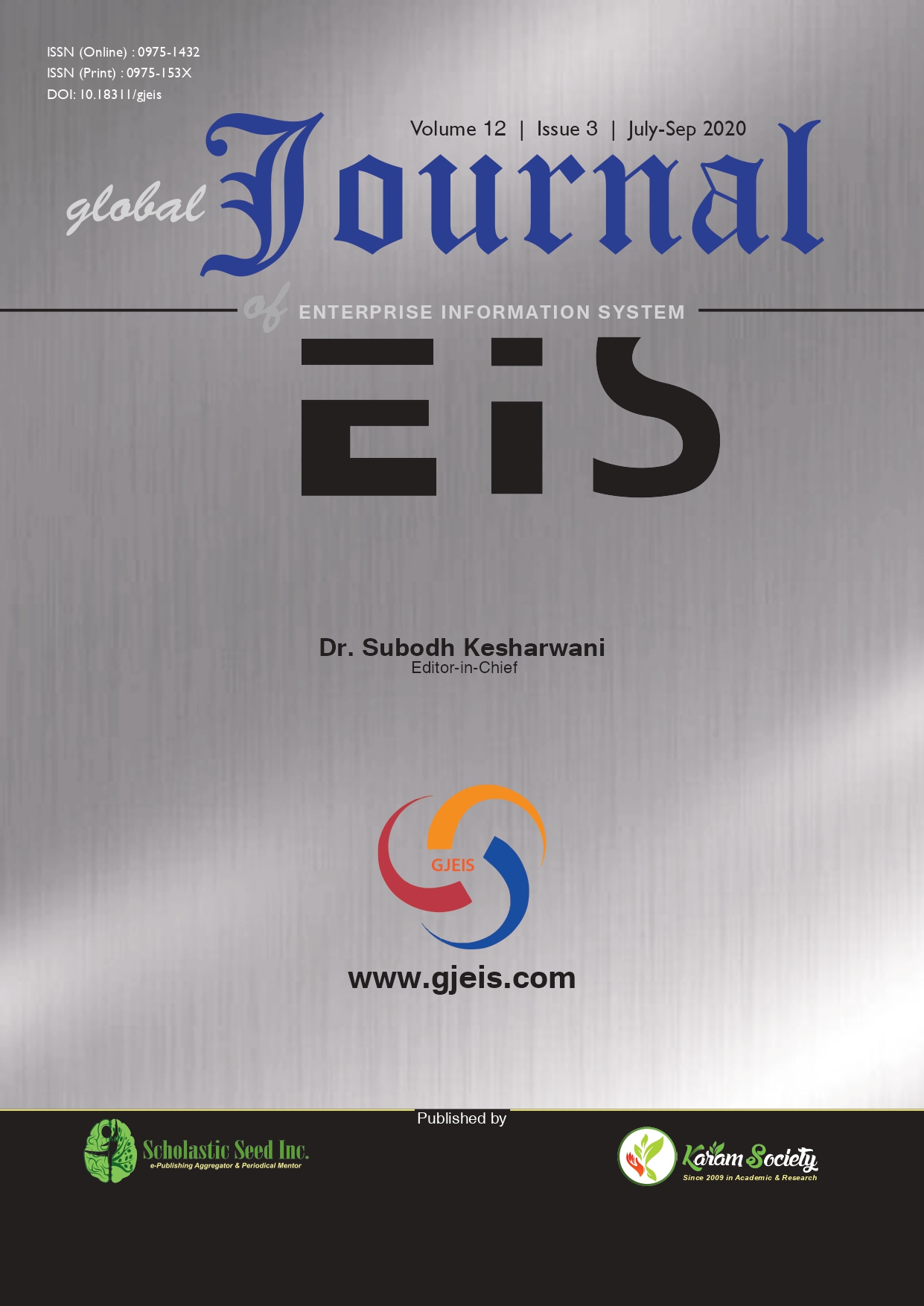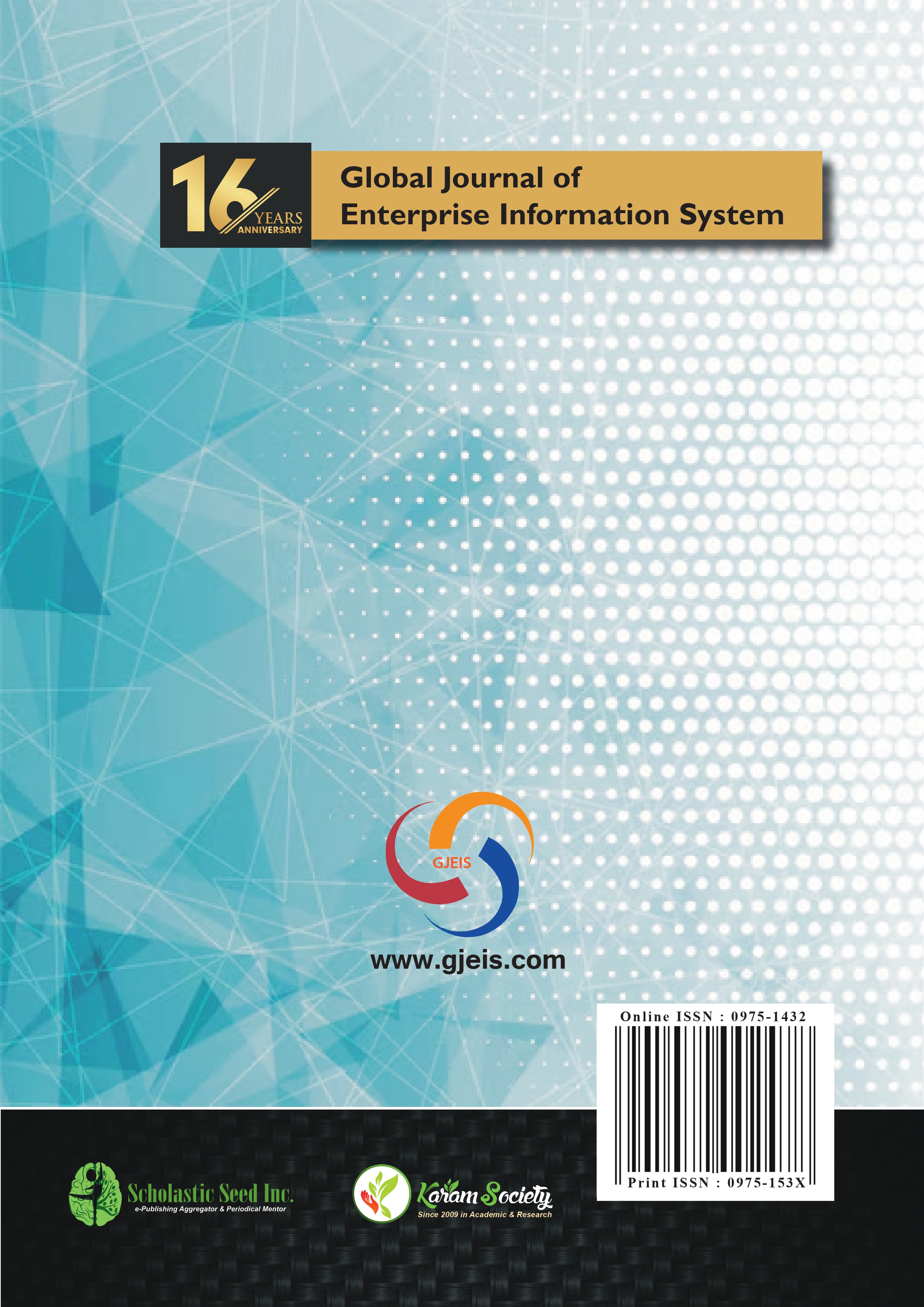Archives
-
 algorithm Used in a Hybrid Age to bring paradigm shift: across all segments and verticals to create an edge
Vol. 11 No. 4 (2019)
algorithm Used in a Hybrid Age to bring paradigm shift: across all segments and verticals to create an edge
Vol. 11 No. 4 (2019)When your business rival introduces or launch any innovation, the only common-sense from our side is to reveal one just like it, intention is very clear to get a niche. Hybrid age is all about cutting edge and advent of blended technology taking past as a base. The rationale behind writing a note on behalf of an editor bench on this meticulous subject matter “Algorithm Used in a Hybrid Age to bring paradigm shift: Across all segments and verticals to create an edge” is well designed and premeditated for this fastidious issue (Volume-11 No.-4 Oct-Dec 2019) due to the advent of technology in all the phases. In entireness we had acknowledged eight articles in various capacities with blended tactics and parade. The earliest and major articles categorization is Empirical Research paper written by Sonakshi Jaiswal, Namratha Sharma and K. Ashwini entitled “Food War: It’s Effect on Gen Y and Z”. The second nomenclature is a Case Study Based Papers in which we had four papers in total which are versatile in nature such as , “Thresholding Algorithms for Image Segmentation - Entropy Based Comparison” (Sudhansh Sharma and Bhavya Sharma), “Impact of US on Chinese and Indian Stock Markets Post Asian Financial Crisis”- (Parul Bhatia), “Optimization of Communication Network Based on Supply Chain Management Model”- (I S Ghuman, Vishal Nagpal & Anurag Saxena and finally “RRBs In India: Strategies for Sustainable Development”- (Namita Rajput and Nandini Marwah). The third nomenclature is Research Thought “Confronting the Virtual Sea of Fake Medicines on the Web: The Battle Continues”- (Peggy E. Chaudhry) and finally the last nomenclature View point “Divers Principles, Algorithm & An Approach To Data Mining: A Comparative View”- (Sachin kumar & Prerita Talwar) and “Blockchain Revolutionizing Industry 4.0 (Decentralize Technology for Industries Automation)”- (Nitin Garg and Nidhi Garg). We had also created some more innovative thoughts in this particular issue which is an insurgency and conception of editorial office such as Book Review, Award, and Biographical note of a Luminary in an area. We had also used some more filler which can categorically work as teasers.
-
 Deep learning Architectures is a class of Machine Learning Algorithms
Vol. 11 No. 3 (2019)
Deep learning Architectures is a class of Machine Learning Algorithms
Vol. 11 No. 3 (2019)The machines have been in use as yet and not in smallest quantities. They are making their line of attack into our day after
day lives, influencing how we remain living, and endeavor to make sense about ourselves. From voice-controlled personal
assistants like Siri and Alexa, to more elementary and profound technologies, for example, social algorithms, suggestive
searches, self-governing and self-driving vehicles flaunting huge prognostic capacities, there are sensibly a great deal of models
and uses of artificial intelligence (AI) in today’s humanity.
Computer science describes AI research as operations of “smart operators” or any apparatus that recognizes its surroundings
and acts in a way that generates the best possible and proficient route for accomplishing its objectives. An increasingly convoluted
definition portrays AI as “a system’s competence to relevantly understand outer information, to learn from such information,
and to make use of those lessons to accomplish explicit objectives and assignments through flexible variation. -
 Artificial Intelligence in a Technological Era
Vol. 11 No. 2 (2019)
Artificial Intelligence in a Technological Era
Vol. 11 No. 2 (2019)The machines have been in use as yet and not in smallest quantities. They are making their line of attack into our day after day lives, influencing how we remain living, and endeavor to make sense about ourselves. From voice-controlled personal assistants like Siri and Alexa, to more elementary and profound technologies, for example, social algorithms, suggestive searches, self-governing and self-driving vehicles flaunting huge prognostic capacities, there are sensibly a great deal of models and uses of artificial intelligence (AI) in today’s humanity.
Computer science describes AI research as operations of “smart operators” or any apparatus that recognizes its surroundings and acts in a way that generates the best possible and proficient route for accomplishing its objectives. An increasingly convoluted definition portrays AI as “a system’s competence to relevantly nderstand outer information, to learn from such information, and to make use of those lessons to accomplish explicit objectives and assignments through flexible variation. -
 Accelerating Financial Inclusion through Block Chain
Vol. 11 No. 1 (2019)
Accelerating Financial Inclusion through Block Chain
Vol. 11 No. 1 (2019)FinTech’ is an appearance debatably coined in the mid-1980s. If you come across at the historic times it has relations since 1800 century. Between 1856-1966 finance and technology came reciprocally as an outcome first analogue financial technology was created. For the first two decades of use, perspicacity is FinTech was primary and principal employed to portray “Backend” banking technologies. It was assumed as vehemently linked & coupled to back-office operations. Financial inclusion is the gratification of making financial services reachable at sensibly priced costs to all folks and trade, in spite of net worth and dimension equally. Financial inclusion strives to contemplate on and unpaid assistant solutions to the self-control that exclude people from participating in the financial sector and also called wide-ranging financing. In early 2000 the first digital bank was make out as almost all financial services institution participated in this game. Global financial crises of 2008 gave remarkable challenges to the traditional method of banking i.e. only via bank thus self-governing FinTech startups got into the portrait. 2014 was the year of every day new FinTech startup. This is when we saw just about every big player, particularly from non-financial services background, jumped into the FinTech market. 2018 was a banner year for FinTech with key drivers of FinTech growth built-in record levels of deals and financing, the appearance of new global tech hubs, and favorable regulatory tailwinds. The combination of these factors positions the FinTech sector to further digitize the customer journey, make inroads in new and adjacent markets, and collaborate across the industry in 2019.The 2019 also going to answer the how in trends we’re anticipating can facilitate to lecture to several questions, such as: How is artificial intelligence (AI) helping banks comply with new regulation?; What does Open Banking mean for consumers and what markets could it spread tonext?; Why are SMBs the next battleground for FinTech?
-
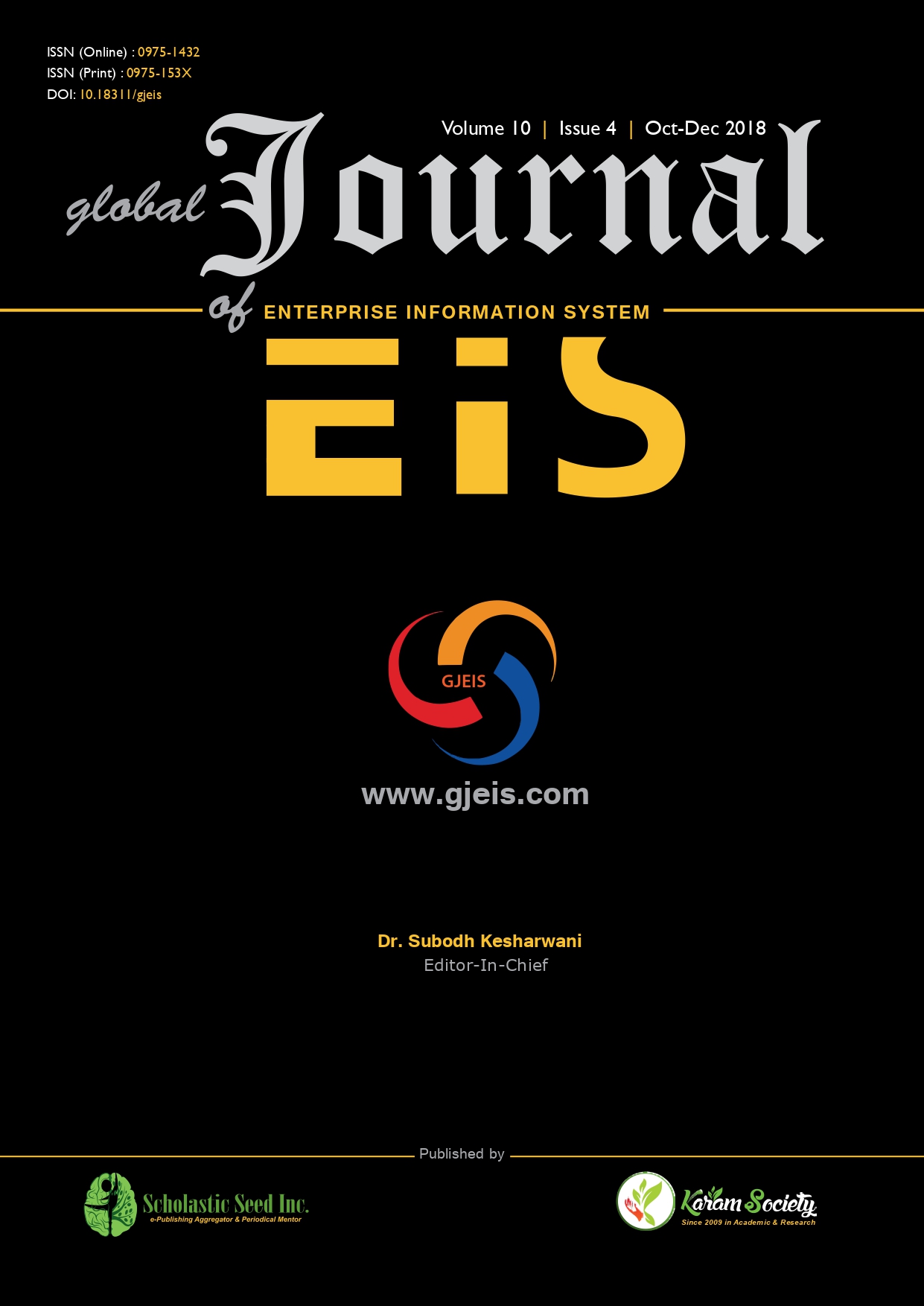 EIS Strategy for Implementation of Contemporary Technology thought Omnipresent in a present State-of-Affairs
Vol. 10 No. 4 (2018)
EIS Strategy for Implementation of Contemporary Technology thought Omnipresent in a present State-of-Affairs
Vol. 10 No. 4 (2018)Every year, there are some technologies that are getting tons of murmur in tech industry. In past years, cloud computing, big data or Hadoop etc have gained lot of popularity. At present, blockchain unquestionably fits in this portrayal. Enterprise information system (EIS) tier, in J2EE architecture, provides an enterprise’s critical business information infrastructure. This system includes enterprise resource planning systems, relational databases and transaction processing systems. Blockchain is an ingenious invention, which is a brainchild of a person or group of people known by the pseudonym, Satoshi Nakamoto. Many people are unaware and are raising question about what exactly is a blockchain. Blockchain technology created the backbone of a new type of internet by allowing digital information to be distributed. It was originally devised for the digital currency, Bitcoin. The use of blockchain technology can be viewed by rapid increase in publications, conferences and articles in journals. The tech community has now found many other potential uses of the technology like Blockchain, Artificial intelligence,
Internet of Thing (IoT), Machine Learning etc. -
 EIS impact in Digital Entrepreneurship
Vol. 10 No. 3 (2018)
EIS impact in Digital Entrepreneurship
Vol. 10 No. 3 (2018)Digital Entrepreneurship can be classified as embracing “new ventures and the alteration of existing business by creating and using novel digital technologies. Digital Enterprises are characterized by an elevated potency of utilisation of new digital technologies (chiefly societal, movable, analytics and cloud solutions) to step forward business operations, formulate new-fangled (digital) business models, pulverize business aptitude, and tie with customers and stakeholders through new (digital) channels”. Digital entrepreneurship is an appearance that describes how entrepreneurship will revolutionize, as business and society lengthen to be transformed by digital technology. Digital entrepreneurship highlights changes in entrepreneurial practice, theory, and education. Beyond learning new sensible skills, digital entrepreneurship is also about new ways of thinking about entrepreneurship itself—which is another way of saying it offers new theories of entrepreneurship. Digital entrepreneurship opens up new questions about policy, circumstance, and jeopardy. Does the most admirable data win? How can I legerdemain a business thought that can be prototyped digitally? How can I step forward my business idea faster than anyone as fighting fit? How can I without complicatedness fastening between different business ideas, and revenue sources? What does it indicate to be an universal business from the first day? And why do community from around the world stay behind trying to smash into my trade?


